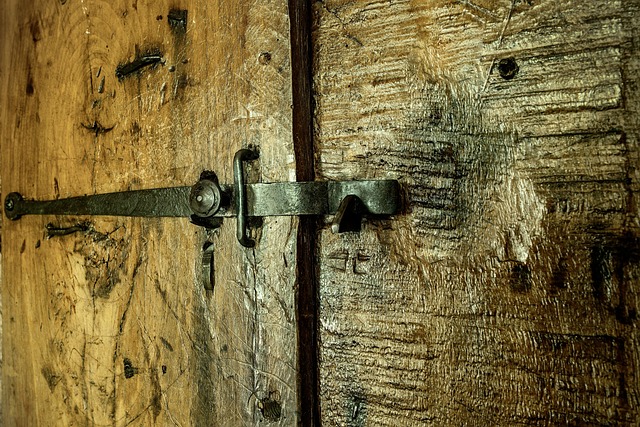Access control systems are essential for enhancing security, managing visitor flow, and streamlining operations in any facility or event. Utilizing technologies like biometric scanners, keycards, and PIN codes, these systems enable organizations to protect sensitive areas, valuable assets, and the safety of their occupants. By establishing different access levels, installing readers at entrances, configuring digital permissions, and integrating with security software, businesses can ensure only authorized personnel gain entry. Biometric data provides high accuracy in individual identification, while keycards offer a traditional yet reliable method. Scalable access control systems adapt to evolving business needs, providing comprehensive tracking, logging, and data-driven decision-making for improved security protocols. Integrating these systems with facility management software offers centralized control and real-time data for efficient operations. In today's digital era, synchronizing access control with existing security measures creates layered protection that deters threats and ensures the safety of personnel and assets.
In today’s world, managing visitor access securely is paramount for businesses and organizations. This article explores the power of access control systems as a game-changer in enhancing security measures. We’ll delve into the fundamentals, highlighting the numerous advantages of implementing professional-grade solutions. From various system types to integration strategies, you’ll discover a comprehensive guide to effective visitor management. Best practices will empower you to navigate this landscape, ensuring a robust and efficient access control infrastructure.
- Understanding Access Control Systems: The Basics
- Benefits of Implementing Professional-Grade Access Control
- Types of Access Control Systems: A Comprehensive Overview
- Integrating Access Control with Existing Security Measures
- Best Practices for Effective Visitor Management
Understanding Access Control Systems: The Basics

Access control systems are a critical component in managing visitor access, ensuring security and efficiency within any facility. These systems are designed to regulate who enters and exits a premises, often employing technologies like biometric scanners, keycards, or PIN codes. By implementing robust access control measures, organizations can safeguard sensitive areas, protect valuable assets, and maintain the safety of occupants.
The basics involve defining various access levels for different user roles and ensuring only authorized individuals can gain entry to specific zones. This involves installing readers at entrances, configuring digital permissions, and integrating with security software. Biometric data, for instance, offers a high level of accuracy in identifying individuals, while keycards provide a more traditional yet reliable method. These systems are scalable, allowing businesses to adapt their access control strategies as their operations grow or change.
Benefits of Implementing Professional-Grade Access Control

Implementing professional-grade access control systems offers numerous benefits that go beyond simple security. These advanced solutions are designed to streamline visitor management, enhancing efficiency and safety in any environment. By employing robust access control technologies, organizations can ensure only authorized personnel gain entry, minimizing unauthorized access and potential risks.
Professional-grade systems provide a comprehensive view of who enters and exits premises, allowing for detailed tracking and logging. This level of control enables better decision-making regarding visitor management policies, improving overall security protocols. Moreover, these systems integrate seamlessly with other facility management software, offering centralized control and real-time data, which is crucial for efficient operations and enhanced operational visibility.
Types of Access Control Systems: A Comprehensive Overview

Access control systems are a crucial component in managing visitor access, ensuring security and streamlining operations for any facility or event. These systems can range from simple manual checks to sophisticated, digital solutions that offer advanced features like biometric identification and real-time monitoring. Understanding the various types available is essential for selecting the most appropriate and effective method.
One common type is the traditional keycard system, where visitors swipe or tap a card with unique identifiers to gain entry. This method is straightforward but lacks advanced security measures. Biometric access control, on the other hand, uses physical characteristics like fingerprints or facial recognition, providing superior security. Additionally, digital solutions offer features such as remote monitoring, integration with existing security systems, and customizable access levels, making them versatile and efficient for managing visitor flow.
Integrating Access Control with Existing Security Measures

In today’s digital era, enhancing security is paramount for any establishment, and integrating access control with existing security measures is a strategic move towards fortifying defenses. Access control systems play a pivotal role in managing who enters a premises, when, and why. By seamlessly incorporating these systems into an organization’s existing security architecture, businesses can create layered protection that deter potential threats and ensure the safety of personnel and assets.
This integration involves syncing access control data with surveillance systems, alarm protocols, and other security software to offer comprehensive monitoring. For instance, granting access to a building via biometric authentication triggers specific camera angles and alerts relevant security personnel, providing real-time response capabilities. Such synchronization not only streamlines operations but also improves overall security effectiveness, making it a crucial step in any professional-grade security setup.
Best Practices for Effective Visitor Management

Access control systems are no longer a luxury but an essential component of any comprehensive security strategy. By implementing professional-grade solutions, businesses can enhance safety, streamline visitor management, and protect sensitive areas. Understanding the various types of access control, integrating them with existing measures, and adhering to best practices ensures optimal security. Investing in robust access control systems is a strategic move that safeguards assets, respects privacy, and contributes to a more secure environment for both staff and visitors.
